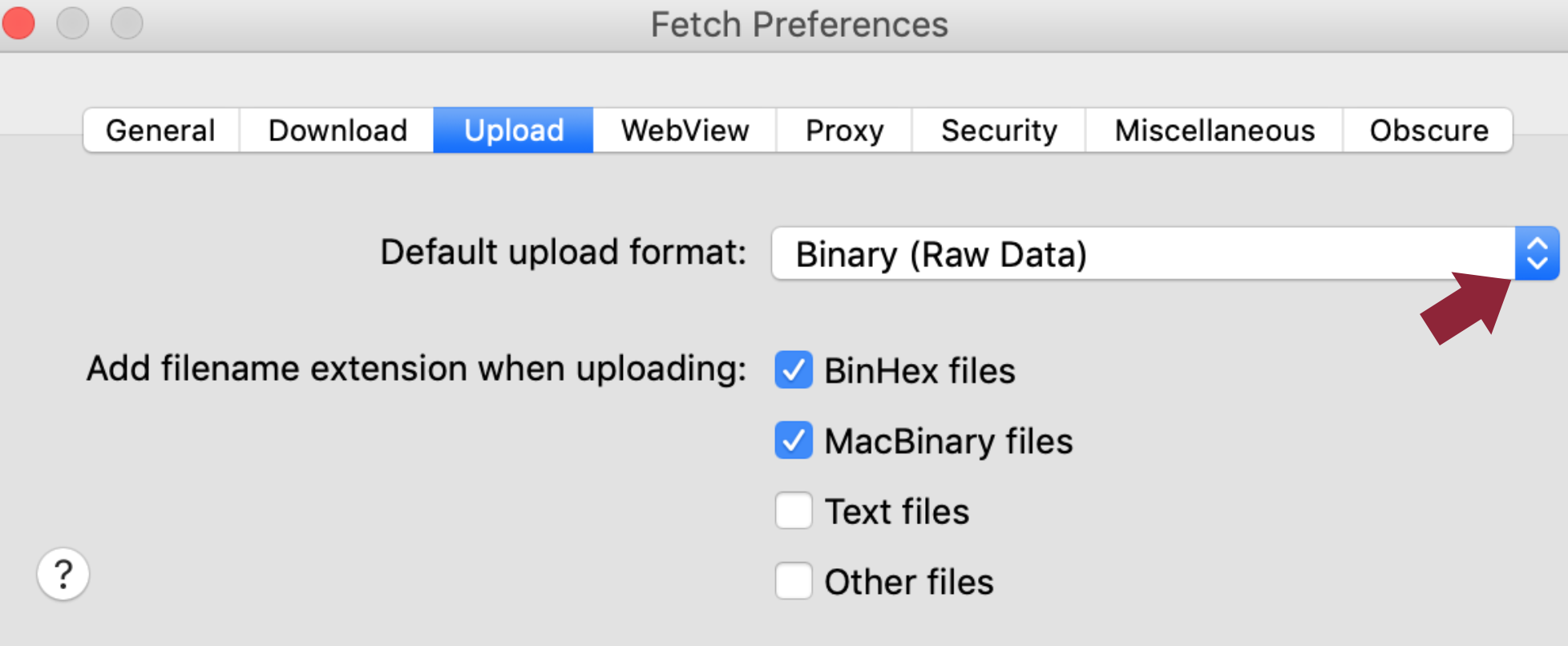The Fetch API provides an interface for fetching resources (including across the network). It will seem familiar to anyone who has used XMLHttpRequest, but the new API provides a more powerful and flexible feature set.
Fetch is a File Transfer Protocol (FTP) program for the Macintosh OS. Visit the ITS Software Services site to download the Fetch installer. There are currently no alerts. Services scheduled for maintenance over the next 7 days. Please refer to the calendar view of alerts for a complete schedule. There is currently no planned maintenance. Mar 23, 2021 Fetch is a full-featured FTP, SFTP and FTPS (FTP with TLS/SSL) client with a simple and easy-to-use interface. Fetch features include: one-click editing remote files with any application, automatic restart of failed or stalled transfers, Quick Look, WebView, droplet shortcuts, automatic support for Zip, Tar, Gzip, StuffIt and other common file formats, Bonjour support, Unicode file names.
Note: This feature is available in Web Workers

Concepts and usage
Fetch provides a generic definition of Request and Response objects (and other things involved with network requests). This will allow them to be used wherever they are needed in the future, whether it’s for service workers, Cache API, and other similar things that handle or modify requests and responses, or any kind of use case that might require you to generate your responses programmatically (that is, the use of computer program or personal programming instructions).
It also defines related concepts such as CORS and the HTTP Origin header semantics, supplanting their separate definitions elsewhere.
For making a request and fetching a resource, use the WindowOrWorkerGlobalScope.fetch() method. It is implemented in multiple interfaces, specifically Window and WorkerGlobalScope. This makes it available in pretty much any context you might want to fetch resources in.

The fetch() method takes one mandatory argument, the path to the resource you want to fetch. It returns a Promise that resolves to the Response to that request — as soon as the server responds with headers — even if the server response is an HTTP error status. You can also optionally pass in an init options object as the second argument (see Request).
Once a Response is retrieved, there are a number of methods available to define what the body content is and how it should be handled.
You can create a request and response directly using the Request() and Response() constructors, but it's uncommon to do this directly. Instead, these are more likely to be created as results of other API actions (for example, FetchEvent.respondWith() from service workers).
Differences from jQuery
The fetch specification differs from jQuery.ajax() in three main ways:
- The Promise returned from
fetch()won’t reject on HTTP error status even if the response is an HTTP404or500. Instead, it will resolve normally (withokstatus set tofalse), and it will only reject on network failure or if anything prevented the request from completing. fetch()won’t send cross-origin cookies unless you set the credentialsinit option (toinclude).- In April 2018, the spec changed the default credentials policy to
'same-origin'. The following browsers shipped an outdated native fetch, and were updated in these versions: Firefox 61.0b13, Safari 12, Chrome 68. - If you are targeting older versions of these browsers, be sure to include
credentials: 'same-origin'init option on all api requests that may be affected by cookies/user login state.
- In April 2018, the spec changed the default credentials policy to
Note
Find out more about using the Fetch API features in Using Fetch, and study concepts in Fetch basic concepts.
Aborting a fetch
Browsers have started to add experimental support for the AbortController and AbortSignal interfaces (aka The Abort API), which allow operations like Fetch and XHR to be aborted if they have not already completed. See the interface pages for more details.
Fetch Interfaces
Fetch Ftp App
WindowOrWorkerGlobalScope.fetch()- The
fetch()method used to fetch a resource. Headers- Represents response/request headers, allowing you to query them and take different actions depending on the results.
Request- Represents a resource request.
Response- Represents the response to a request.
Specifications
| Specification | Status | Comment |
|---|---|---|
| Fetch | Living Standard | Initial definition |
Browser compatibility
BCD tables only load in the browser